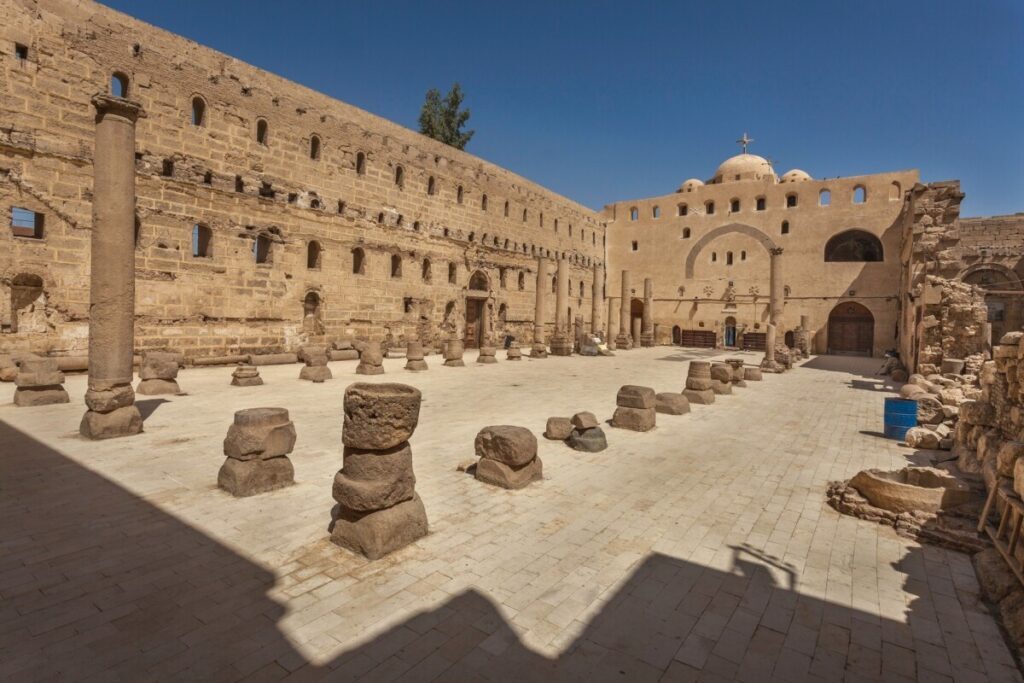No other nation in the world says ‘Welcome’ as often as the Egyptians, and every time, they mean it. While the ancient civilization of Egypt continues to amaze, contemporary Egyptians are equally remarkable.
The White Monastery
The History of the White Monastery
The White Monastery, an integral part of Egypt’s ecclesiastical heritage, was founded by St. Shenouda between 332/350 and 451/466 A.D. It gained prominence due to St. Shenouda’s esteemed reputation. Here’s an overview of its history and architecture:
Foundation and Significance
- Founded by St. Shenouda, the White Monastery quickly became a significant monastic establishment in Egypt.
Architectural Importance
- The monastery’s church is a landmark in Egyptian architecture, with a profound influence on subsequent church constructions.
- It follows a basilica style, characterized by a three-aisled layout. The exterior walls, crowned by a cornice, reflect Egyptian temple styles.
Persian Conquest and Restoration
- During the Persian conquest in 619 A.D., the church was burned down but was meticulously reconstructed, preserving its original design and dimensions.
Architectural Evolution
- The church has undergone various phases of damage, repair, and remodeling, leading to differences from Shenouda’s original structure.
- The roof is now missing, but the surviving columns indicate the layout of side aisles and pulpit steps.
Interior Features
- The church’s nave originally had a roof and was adorned with painted walls, columns, and niches.
- A significant alteration is a high wall at the nave’s eastern end, replacing an original arch and separating the nave from the sacred area.
Modern Adaptations
- The modern sacred area includes a choir room, possibly built in the 9th century, with later vaulting.
- Three domed, semi-circular chapels (apses) are present at the east end, with the central apse housing the main altar.
Access and Layout
- Visitors enter through a gateway leading to a long room parallel to the church, the purpose of which is uncertain
- A vestibule (narthex) at the church’s western end and a blocked gateway in the north wall are notable features
- A gallery above the side aisles allowed viewing into the nave.
Current State and Use
- The White Monastery functions as an active site of worship, with adjustments to accommodate modern religious practices.
- It continues to attract visitors and scholars for its historical and architectural significance.
The White Monastery stands as a testament to the enduring legacy of Christian monasticism in Egypt, showcasing centuries of religious, cultural, and architectural evolution. Its history reflects the dynamic interplay between preservation and adaptation in the face of changing times and challenges.
Created On March 18, 2020
Updated On Aug , 2024



